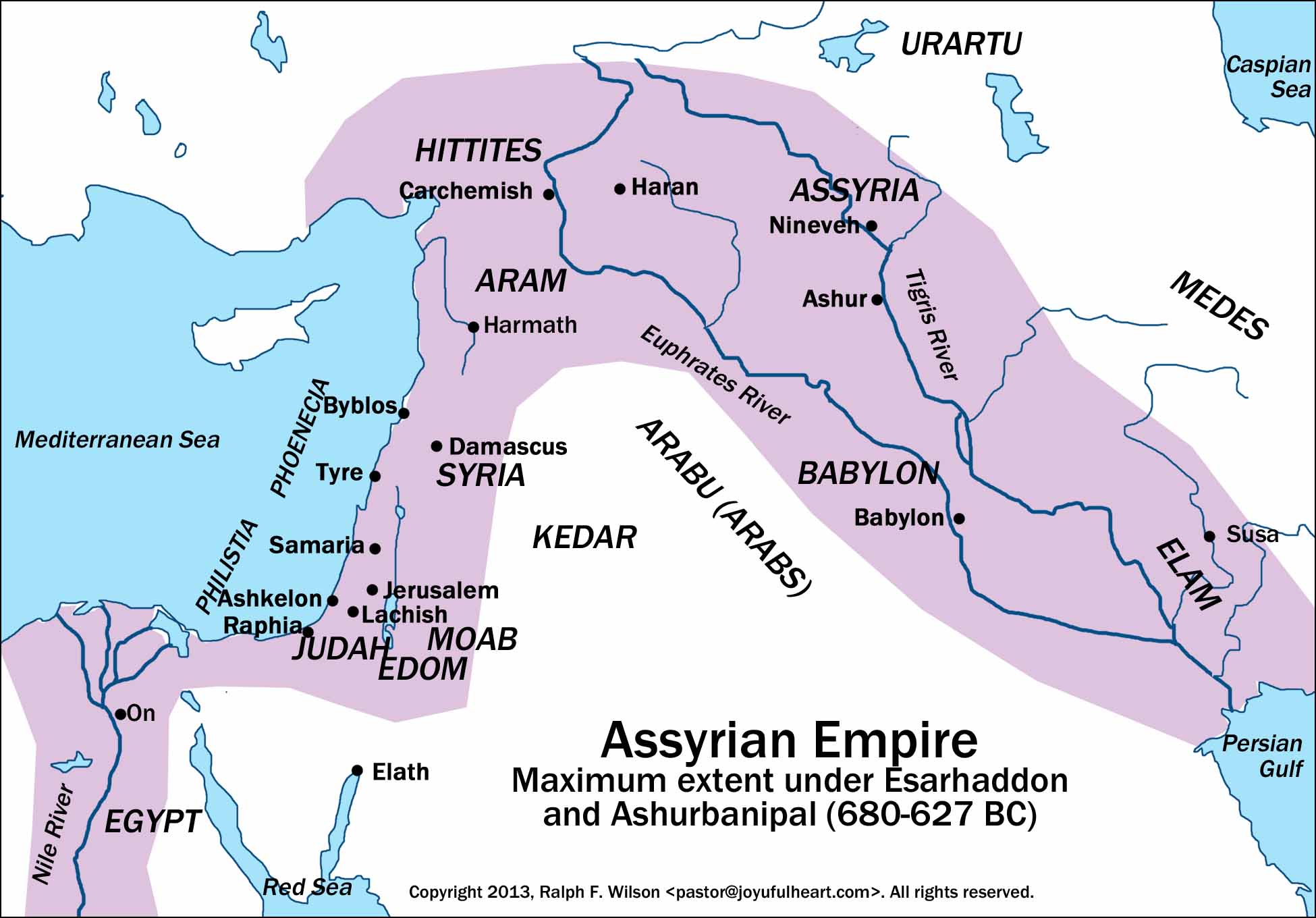
7. Jerusalem's Warfare Is Over (Isaiah 4048) Isaiah Discipleship Lessons from the Fifth Gospel
Middle Assyrian Period. In the 15th century BCE, Hurrians from Mitanni sacked Ashur and made Assyria a vassal. When Mitanni collapsed under pressure from the Hittites in Anatolia, Ashur again rose to power under Ashur-uballit I (1365-1330 BCE).He married his daughter to the Kassite ruler of Babylon with disastrous results: The Kassite faction in Babylon murdered the king and placed a pretender.

The Assyrian Empire during various phases of its history Download Scientific Diagram
The Middle Assyrian Empire was the third stage of Assyrian history, covering the history of Assyria from the accession of Ashur-uballit I c. 1365 BC and the rise of Assyria as a territorial kingdom to the death of Ashur-dan II in 912 BC. The Middle Assyrian Empire was Assyria's first true period of ascendancy as an empire, although Assyrian kings had existed from perhaps as early as the 25th.
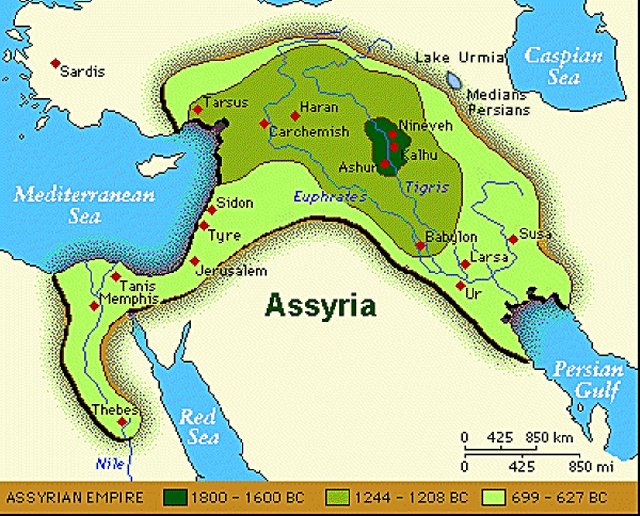
Surprisingly Rapid Decline Of NeoAssyrian Empire Still Baffles Researchers
In the Middle East, the Assyrian Empire was followed by others, from the Persian up to the Ottoman Empire. Although empire is a shape-shifting phenomenon, all these geopolitical entities were essentially based on a blueprint that the Assyrians were the first to create.

Assyrian Empire 1100 606 B.C. ⚔️ Bible mapping, Bible study plans, Mesopotamia
King Adad-Nirari I (1307 to 1275 B.C.) expanded the Assyrian empire in contrast to two proceeding kings who merely maintained control. King Adad-Nirari implemented the policy of deportation of segments of the population from one region to another, which remained a standard Assyrian policy from then on.

The Old Assyrian Period The Growth Towards An Empire About History
Assyria experienced fluctuating fortunes in the Middle Assyrian period. Assyria had a period of empire under Shamshi-Adad I and Ishme-Dagan in the 19th and 18th centuries BCE. Following the reigns of these two kings, it found itself under Babylonian and Mitanni-Hurrian domination for short periods in the 18th and 15th centuries BCE, respectively.

Wiki Assyria upcScavenger
The archaeological and historical evidence for this early phase of the Assyrian Empire, also known as the Middle Assyrian period (ca. 1350-1050 BCE), has increased significantly over the past decades, with key evidence emerging from the Balikh Valley, the Upper Tigris region, the Lower Khabur, the Middle Euphrates, and most recently, Iraqi.
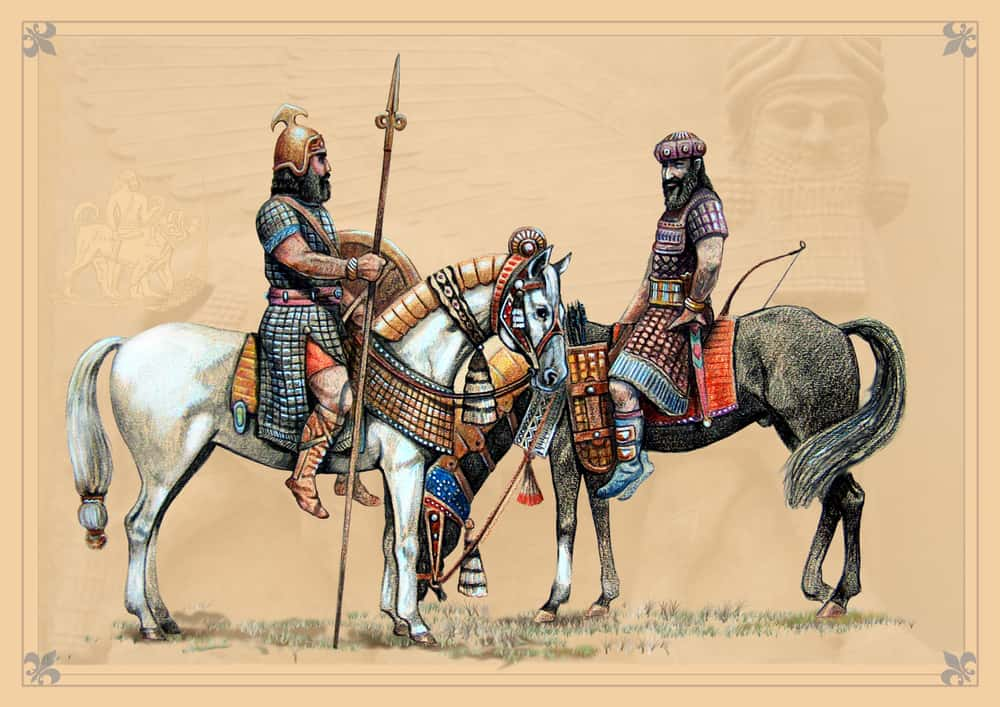
43 Assorted Facts About The Assyrian Empire
Donors are crucial to our ability to fund a wide range of programs and initiatives in medieval and renaissance studies. Gifts to the Crusades Studies Forum support scholarly lectures and the International Symposium on Crusade Studies held every four years on the campus of Saint Louis University.. Additional opportunities include gifts to support SLU's Annual Symposium on Medieval and.

Maps Regan Assyrians
The new conquests were consolidated by succeeding kings and, under Adad-nirari I (r. 1307-1275 B.C.), the remnants of the state of Mitanni were conquered and Assyrian control stretched to the Euphrates and the borders of the Hittite empire. Assyria reached its greatest extent during this so-called Middle Assyrian period under the warrior king.
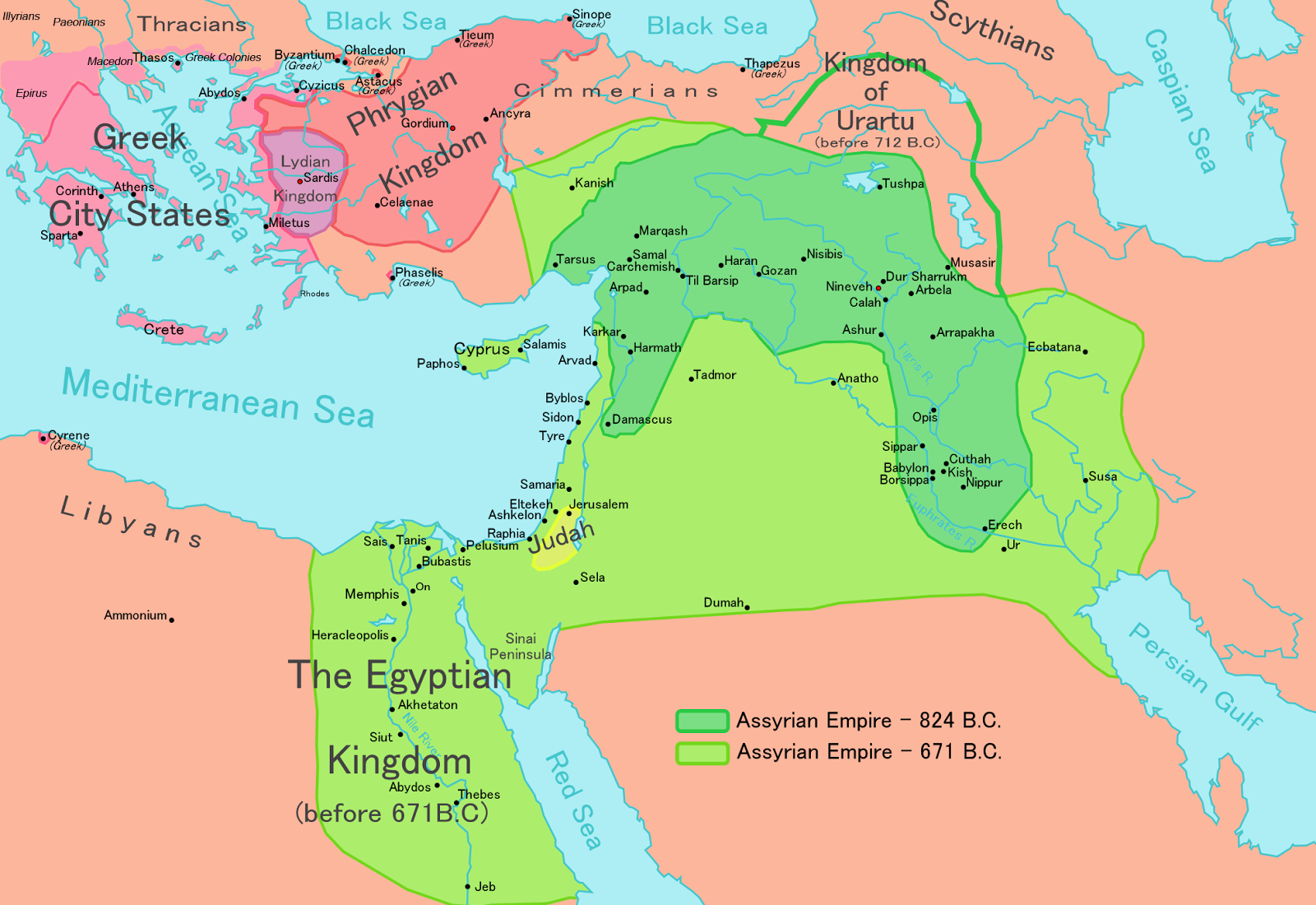
From the House and Sanctuary Bible Study Jonah and Nahum (Part 3 of 3)
For 300 years, from 900 to 600 B.C., the Assyrian Empire expanded, conquered and ruled the Middle East, including Mesopotamia, Egypt, the eastern coast of the Mediterranean, and parts of today's Turkey, Iran and Iraq.

assyria_empire.png (3508×2481) Biblia Pinterest
Middle Assyrian Empire Relief of King Ashurbanipal at a Banquet, Neo-Assyrian, 668-627 BCE (Reign of Ashurbanipal), via the British Museum, London As the Assyrians progressed through the Bronze Age, they used their trade networks to fund the Middle Assyrian Empire (c. 1400-1050 BCE). This was the era when Assyria joined the "Great Powers club.
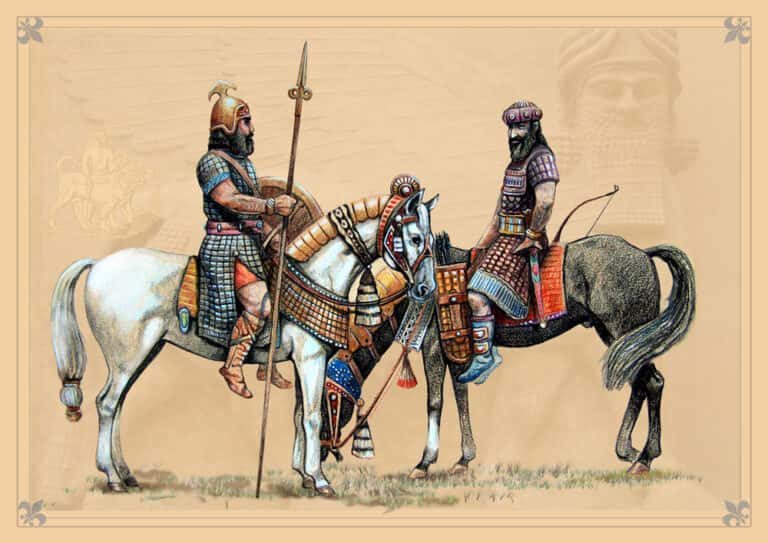
Assorted Facts About The Assyrian Empire
The Assyrians are well known for their vast ancient empire in the Middle East; ancient cities, such as Nimrud and Nineveh; and their fierce invasions, including into the Kingdom of Judah and Egypt.
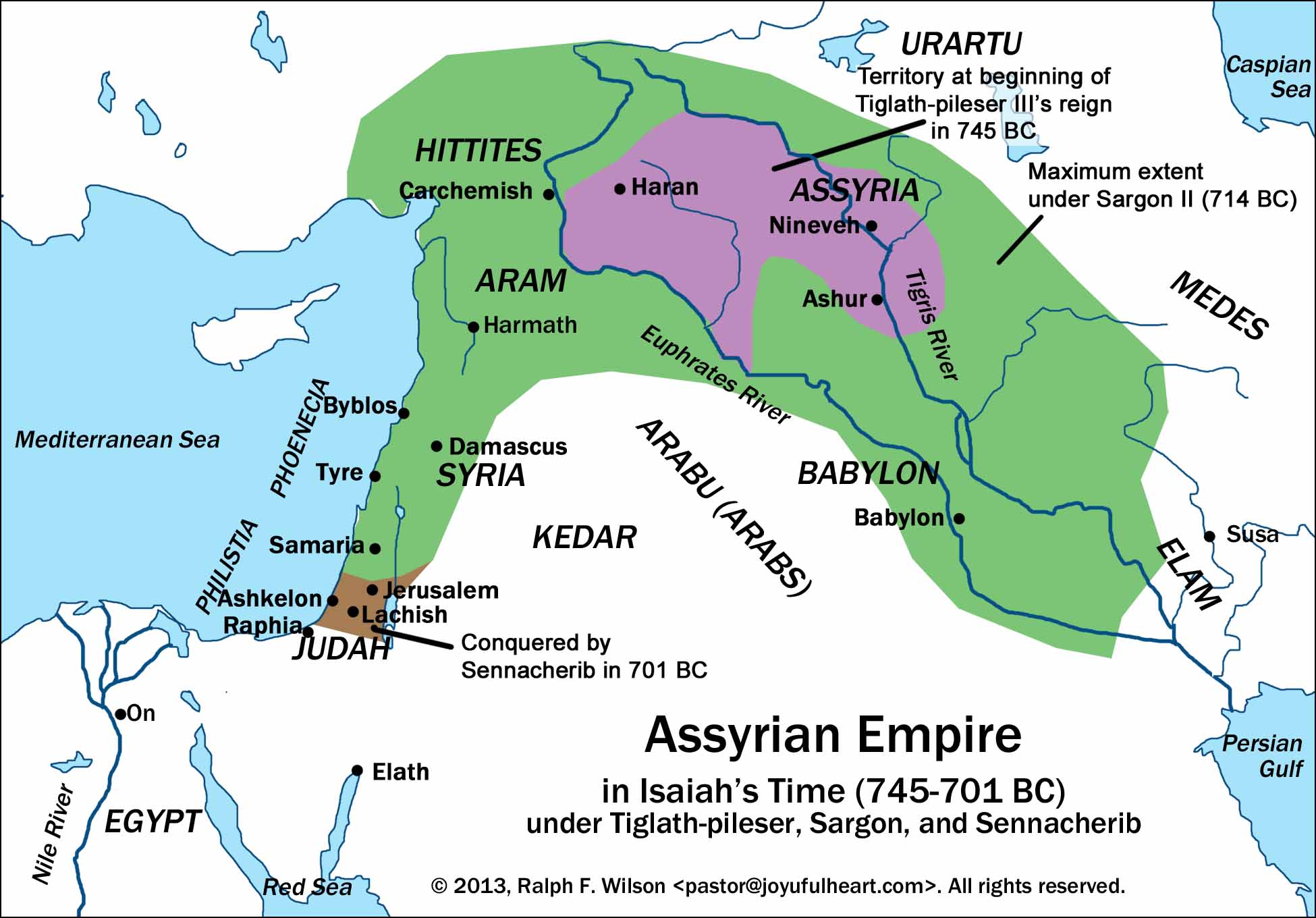
6. Hezekiah's Reign (Isaiah 3639; 2 Kings 18) Isaiah Discipleship Lessons from the Fifth Gospel
— Archdiocese of STL (@archstl) June 28, 2020 "The history of the statue of St. Louis, the King, is one founded in piety and reverence before God, and for non-believers, respect for one's.
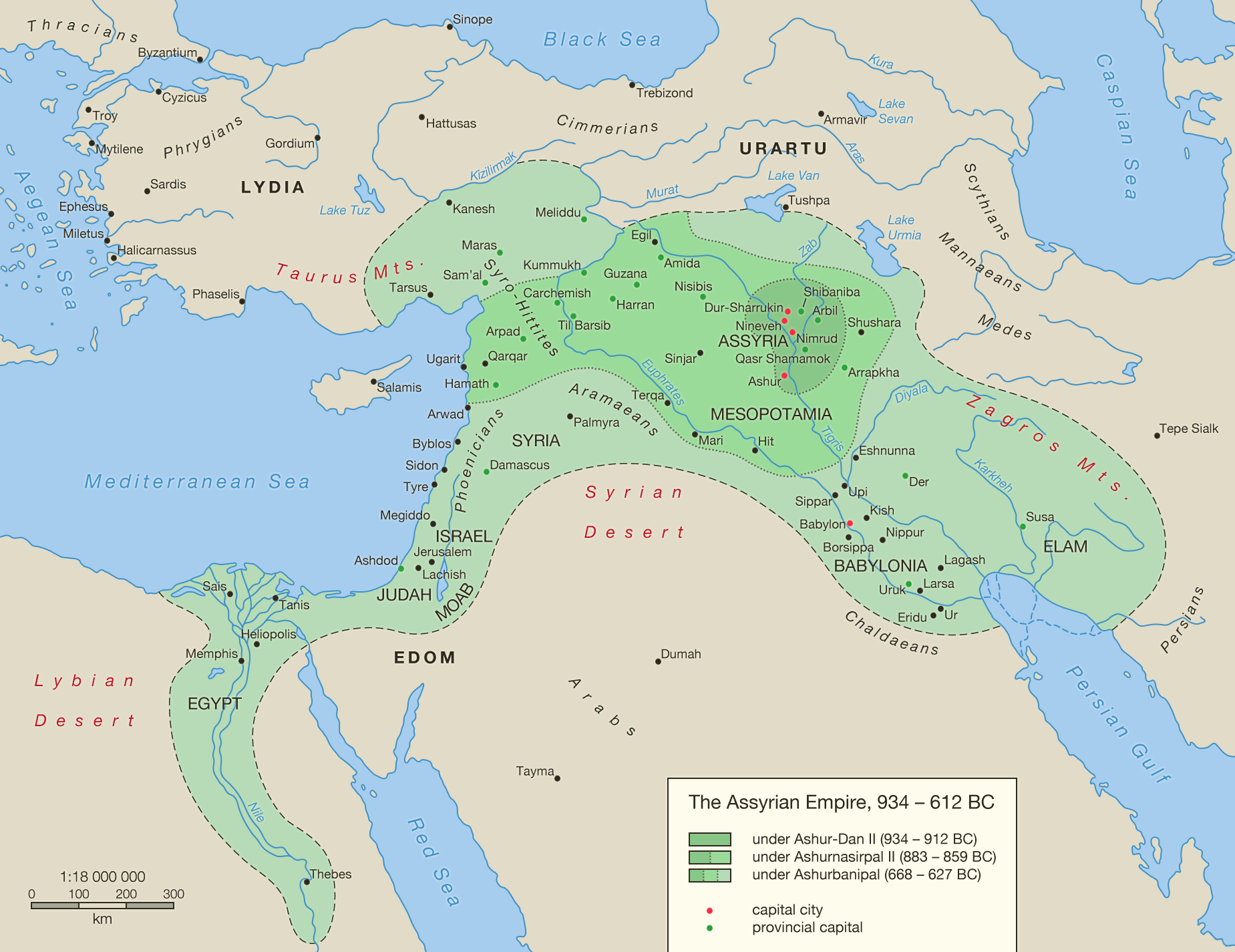
The Assyrian Empire, 934 612 BC by Undevicesimus on DeviantArt
Assyria (Neo-Assyrian cuneiform: , romanized:māt Aššur) was a major ancient Mesopotamian civilization which existed as a city-state from the 21st century BC to the 14th century BC, then to a territorial state, and eventually an empire from the 14th century BC to the 7th century BC.. Spanning from the early Bronze Age to the late Iron Age, modern historians typically divide ancient Assyrian.

Is ISIS’ Caliphate A Harbinger Of The Antichrist? Coercion Code "Dark Times are upon us"
The Assyrian Empire started off as a major regional power in Mesopotamia in the second millennium B.C.E., but later grew in size and stature in the first millennium B.C.E. under a series of powerful rulers, becoming one of the world's earliest . empires.. Assyria was located in the northern part of Mesopotamia, which corresponds to most parts of modern-day Iraq as well as parts of Iran.
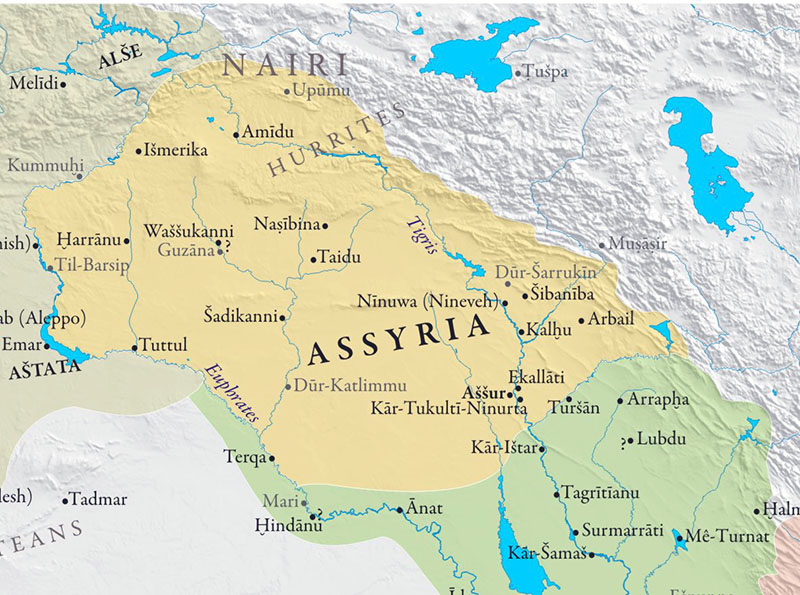
Assyria Territory and economy Short history website
The area of the Middle East dominated by Assyria was divided into the Assyrian homeland, the kingdom of Assyria, and a much larger area. In earlier times this was covered by vassal kingdoms, but later much of it was governed directly from the Assyrian court through provincial governors.. Nineveh was the capital of the Assyrian empire at the.

History1111 Assyria
Assyria was the region located in the ancient Near East which, under the Neo-Assyrian Empire, reached from Mesopotamia (modern-day Iraq) through Asia Minor (modern Turkey) and down through Egypt.The empire began modestly at the city of Ashur (known as Subartu to the Sumerians), located in Mesopotamia north-east of Babylon, where merchants who traded in Anatolia became increasingly wealthy and.